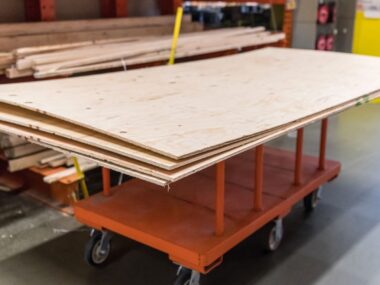You’ve finally decided to ditch your old TV for a newer, bigger, and better model. But before you start shopping around, you need to know how to measure a flat screen TV.
How to measure a flat screen tv
The first step in measuring your TV screen size is to measure the diagonal length of the screen itself. This can be done by placing a ruler horizontally across the middle of the screen and measuring from one corner to another. If you want to take an even more accurate measurement, you can use a tape measure.
Once you have the diagonal length of the screen, you need to decide what size TV stand or entertainment center you want. This will largely be determined by the size of your room and how much space you have available. If you’re tight on space, you may want to opt for a smaller stand or even wall mounting your TV.
However, if you have the space and can afford a bigger stand, you might want to go for something larger than your original measurements in order to accommodate future purchases or expansions of your home entertainment system.
Once you’ve decided on the size of the stand, simply subtract that number from the diagonal measurement to determine your TV screen size.
And that’s it! You’re officially ready to go shopping for the perfect flat screen TV to suit your needs and style. Good luck, and happy viewing!
Types of flat screen TVs
There are several different types of flat screen TVs available on the market today, including LCD, plasma, and LED models. Each type of TV has its own set of advantages and disadvantages, so it’s important to take your individual needs into account when choosing a model.
- LCD (liquid crystal display) TVs are among the most popular and affordable models on the market today. They offer excellent picture quality and are available in a wide range of sizes. However, LCD models can suffer from screen “burn-in” if left on for extended periods of time, so they may not be the best choice for dedicated home theater setups.
- Plasma TVs offer some of the best picture quality available, and are usually very affordable as well. However, they require more power to operate than other types of flat screen TVs and can be quite heavy, so they may not be the best choice for smaller rooms or wall mounting.
- LED (light-emitting diode) TVs are relatively newer on the market compared to LCD and plasma models, but have quickly become popular due to their high picture quality and energy efficiency. However, LED TVs can be quite expensive, so they may not be the best choice for budget-conscious shoppers.
Importance of size
When it comes to choosing a flat screen TV, size is important for two main reasons: picture quality and viewing experience.
Picture quality: Larger TVs offer a better picture quality than smaller models, thanks to their increased pixel density. This means that you’ll be able to see more detail and clarity on a larger TV, making it the ideal choice for dedicated home theater setups.
Viewing experience: Not only does a larger TV offer a better picture quality, but it also provides a more immersive viewing experience. This is especially important if you plan on using your TV for gaming or watching movies.
So, when it comes to choosing the right flat screen TV for your needs, be sure to take size into consideration. Whether you want the best picture quality or simply want to maximize your viewing experience, a larger TV is always better.
Whether you’re shopping on a budget or simply want the best possible viewing experience, it’s always worth considering a larger TV. Thanks to their increased pixel density, larger TVs offer a better picture quality than smaller models. Plus, they provide a more immersive viewing experience that’s perfect for gaming or watching movies.











